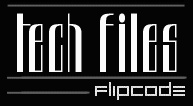 Well, it's been a while since my last update, but I think now is a good moment. I've been busy the last couple of weeks learning OpenGL. Although at first I was a bit overwhelmed by the complexity of the API, I got used to it quite fast. A friend of mine also found a nice OpenGL wrapper component for C++Builder, and the result can be seen in the new test-app. The changes are significant, but not very visible. The biggest change is of course the switch to GL, but also the addition of a (rudimentary) 3DS-file loader. I also added a checkbox to turn on/off the CPU-usage bars. These bars simply aren't made for high-speed animation, and switching them off makes quite a difference. The other changes are all invisible. I've been playing around with my class-definitions again, and I think I have a nice structure now where most tasks/data are owned by the correct class. Good class design is very important in my view. If done well, it can make all the difference in having clean, easy-to-read-and-understand or complex, hard-to-follow-and-maintain code. In a one man project the size of a 3D engine this is a nice feature and not very essential. For anything larger, especially if a team is writing it, it can make the difference between success or failure. The nice thing about OpenGL is that it is possible to replace the software renderer a piece at a time. At this point, I have simply replaced my own rasterizer with the GL one. This was very straightforward: At the very end of my rendering pipeline, there was a loop like this:
This is the complete polygon-filler! Couldn't be simpler in my view :). Of course this is only the first step. Ultimately, the entire engine should be built around the GL structure, which means a lot more modifications. It's probably worthwhile to start from scratch. Until then, I think I now have the basic framework for further experimenting with visibility determination and more advanced rendering algorithms (raytracing and radiosity). More on these subjects later. Happy coding, Jeroen  
Download The Sample Program: ManicMotion.exe |

